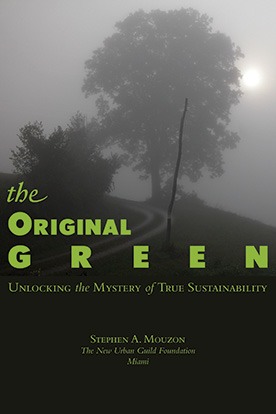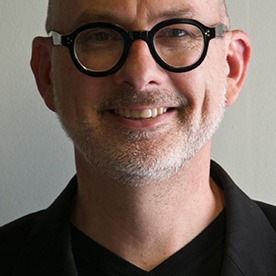search the Original Green Blog

I made a startling discovery while working to finish New Media for Designers + Builders, which is my latest book: the virtues and ethics that underlie the construction of sustainable places and buildings and the virtues and ethics that I believe will underlie business in the age that is now dawning are exactly the same! How can this be? What can business-building possibly have to do with place-making? Let's look:
Virtues and Ethics
A virtue, for the purposes of this discussion, is something we aspire to be: Be patient. Be kind. Be hopeful. An ethic, on the other hand, is something we aspire to do. Treat people fairly. Recycle. Buy local. To be and to do. Virtues are within us; ethics are what we do with the people and things outside us.
The three prime virtues of business since the beginning of the Industrial Revolution have been quality, speed, and economy. Or better, faster, cheaper, if you prefer. I believe we're now in a time of transition so great that even the prime ethics of business are changing. The new prime virtues, I'd suggest, appear to be patience, generosity, and connectedness.
Patience

Nothing you do today with the New Media is going to yield a measurable benefit in the first week, or even the first month. But if you are patient, the rewards you'll enjoy eventually will be far greater than what you would have reaped looking for immediate gratification. So patience is in many ways the opposite of speed.
Generosity

Giving useful things away sounds insane when people are broke. But if you put things out there that are truly useful, not just teasers, which someone can download and never come back to you again, you'll receive a larger recompense someday. Like patience and speed, generosity is in many ways the opposite to economy.
Connectedness

The relationship between quality and connectedness is a little different. For all of our lifetimes until now, you first did excellent work and that work got you published so that you became connected with many people. In other words, you became famous. Now, we have the tools to easily connect with others to begin with. I founded the New Urban Guild a decade ago, and working side-by-side with Guild architects has made me a much better architect. Starting with quality and ending at connectedness tends to arrogance because it's easy to say: "I'm so famous because I'm so good." Starting with connectedness, however, leads to humility because you realize "I'm better at what I do because of those around me."
Sustainable Place-Making
Here's where it gets interesting. Sprawl development, especially since World War II, has been built squarely on the old virtues of better-faster-cheaper, and those virtues have created the most unsustainable development patterns in human history. Truly sustainable places filled with green buildings are almost impossible under the better-faster-cheaper regime, but would flourish among the virtues of patience, generosity, and connectedness. Here are a few examples:
Patient Places

Build a place patiently, like Orjan Lindroth is doing at Schooner Bay, and you reap an enormous ecological dividend on many counts. Build at a high "development velocity," on the other hand, and you're left at the mercy of the interest clock ticking down at the bank.
Generous Places
If you build a neighborhood generously, you plan lots of parks, greens, squares, and plazas for people to gather. If not, you try to squeeze every dollar out of the land by cutting every acre of your subdivision up into lots.
Connected Places
A highly connected place is one where you can turn down many streets walking to many places where you might meet someone, or catch up with an old friend. Quality first, however, puts us in slick cars that cruise at high speed down a supposedly efficient highway system, but where the only interaction we have with others is called "road rage."
Patient Buildings
Buildings built patiently start small, and grow over time as the homeowners' needs change through life, resulting in several side-benefits including the fact that they're often more charming. But if you want that whole house immediately, you have to mortgage yourself into a deep hole… a hole that millions have recently found themselves unable to get out of.
Generous Buildings
A generous building is green in so many ways, and frees its occupants from much of the burden of energy and resource costs. It even entices people outdoors into gardens where they get acclimated to the local environment and are able to cut the equipment off and live in season for much of the year. Paradoxically, buildings built for economy try to control everything with machines and are therefore under a mechanical tyranny where their tolerance decreases to the point that the machines must be on every day of the year.
Connected Buildings

It's easy to think that buildings aspiring to be more connected must have the fastest fibre optics cable and the like, but this is only a small part. Real connectedness connects us with each other in homes designed to bring families together and workplaces designed to foster better collaboration. And they connect their inhabitants to their neighbors by turning human faces, not garage doors, to the street.
What Do You Think?
There are many more examples of the types of sustainable places and green buildings that patience, generosity, and connectedness produce. What are the first ones that come to your mind?
~Steve Mouzon


